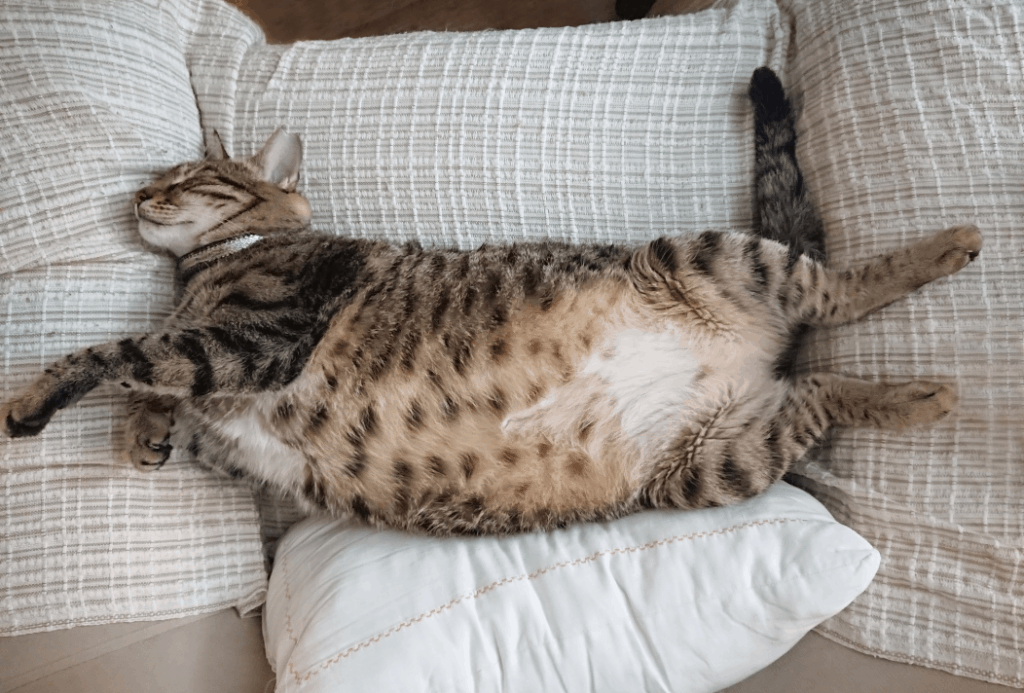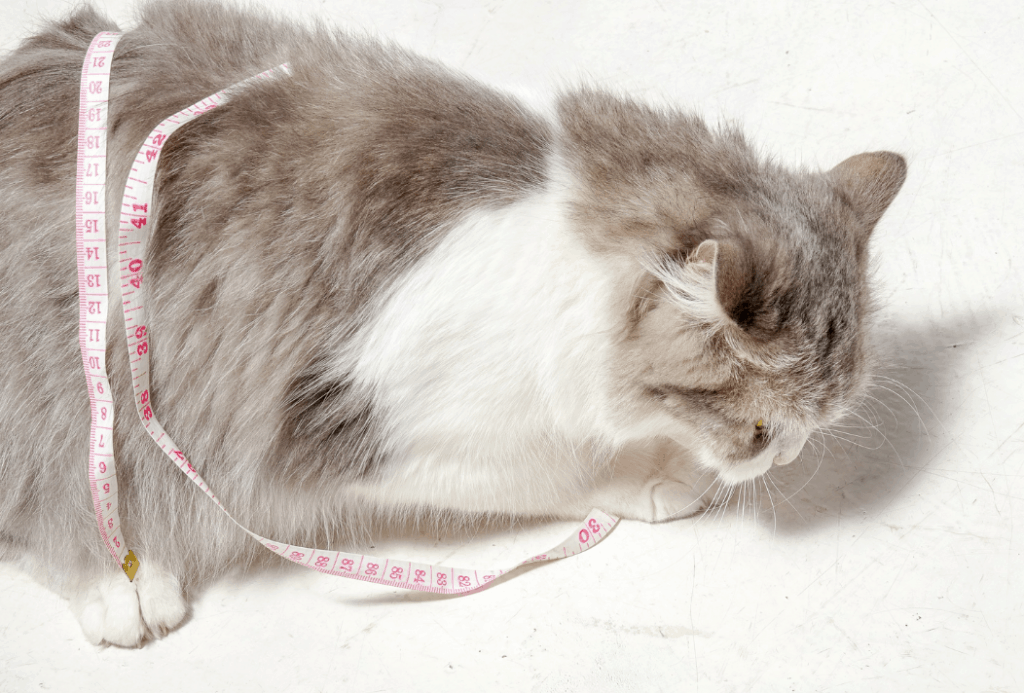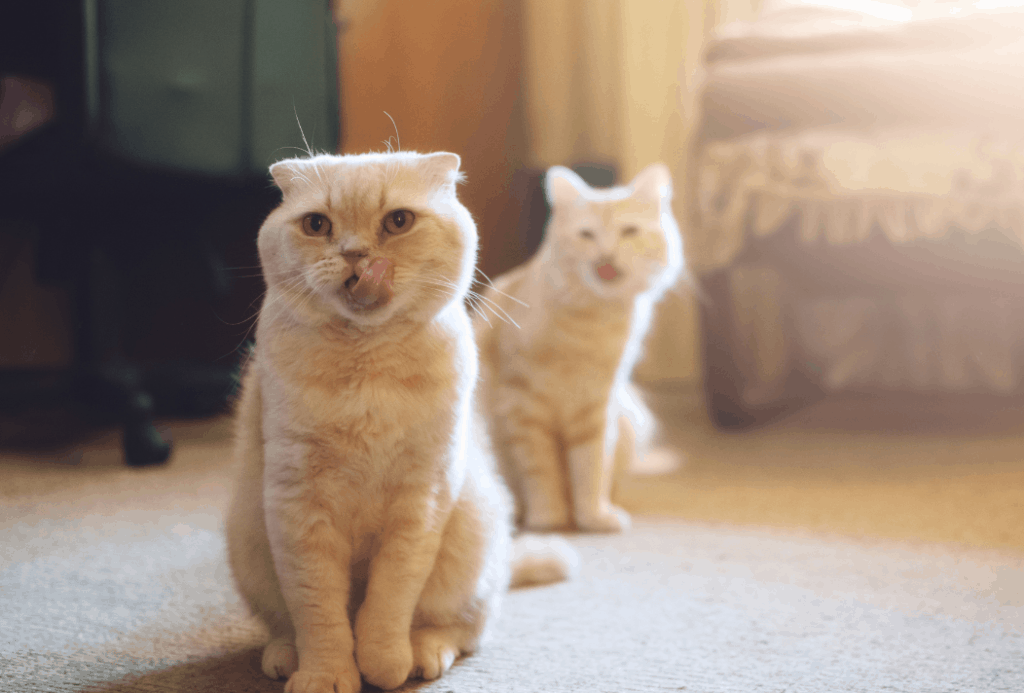Putting your Cat on a Diet that Works
According to the Association for Pet Obesity Prevention, almost 60% of adult cats in the United States are overweight, and almost 30% of cats are considered obese. Unlike feral cats who are more active and tend to hunt for their food, house cats tend to be overfed and don’t expend a lot of energy when it comes to searching for their next meal. Also, many indoor cats live very sedentary lifestyles.
Overweight and obese cats are three times more likely to develop diabetes. They may also be at a higher risk of developing high blood pressure, heart disease, and joint disease like arthritis. By helping your overweight or obese cat lose extra body fat, you can extend his life expectancy by one to two years! In this article we give you some expert vet tips on how to ease your feline onto the diet that’s best for their health and longevity.

Nutrition to help your cat lose weight
To help your cat lose weight, you will need to focus on calories taken in and calories expended, i.e. nutrition and activity by your kitty. Let’s first take a look at some considerations for the nutrition component of the equation.
Understand the advised calorie intake for your cat
The average adult cat should weigh about 9 to 10 pounds. For an indoor cat, this means that 200 kilocalories or kcal per day should be sufficient for a cat’s daily energy requirements. Bags of dry cat food and cans of wet cat food usually list the kcal per cup or kcal per can of food. This is useful when it comes to calculating the number of calories your cat should receive each day.
Determine how much weight your cat needs to lose
It is important that your veterinarian help you with the initial weight loss plan. Some kitties only need to lose a pound or two while others need to lose almost half of the body weight! Your vet can help determine what the target weight should be and how long it will take to get there, usually six months or one pound of body weight per month. If dramatic weight loss is necessary, your kitty might have a smaller target to start with and then continue over time. Cats should not lose more than one or two percent of their body weight per week.

Avoid self-feeders – meals should be small, frequent and portion controlled!
The easiest way to help your cat lose weight is to feed small but frequent meals throughout the day. Rather than leaving food down all day, you can opt for feeding canned food in small portions. Cats lose weight faster with smaller but frequent meals, and they will be less likely to beg you for snacks if they eat often! Because you will need to keep track of calories every day, avoid leaving food down or using self-feeders if you can.
Gradually introduce new weight loss foods
You should gradually introduce a new diet to your cat. The best weight loss foods are those with high protein and low carbohydrate content. Because cats are finicky eaters, it may take two to three weeks before your cat decides to eat the new food. Never take away the original food when a cat won’t eat the new food. It only takes a couple of days of not eating for hepatic lipidosis to occur. This is a severe disease where the liver goes into starvation mode and turns to fat. Without treatment, it can be fatal.
There are many weight loss cat foods available, and some of the most effective are therapeutic diets from your veterinarian. Purina’s OM diet and Royal Canin’s Calorie Control diet are both foods with high protein and low carbohydrate content. Foods like Hill’s w/d diet and Royal Canin’s Satiety Support diet are meant to help kitties feel fuller longer thanks to a high fiber content. Hill’s also has a food called Metabolic that helps to boost your cat’s metabolism.
What if your cat won’t eat the special weight loss food?
If your cat doesn’t seem interested in the new food after the first few weeks, there are ways to help entice him to eat it.
- Canned food can be warmed in the microwave for a few seconds.
- You can add tuna or salmon juice to both wet and dry foods, and sometimes low-sodium chicken broth is also acceptable.
- Omega-3 fatty acid supplements are available in an oil form that can be pumped onto the food.
- You might also take a tiny pinch of dried oregano – which is related to catnip – and sprinkle it on your cat’s food.
- If your cat still tries to beg you for treats and snacks, you can distract him with toys or attention. You can also offer him some water.
How to put a cat on diet food with multiple cats
For multi-cat households, most young adult cats with healthy body weights can share these weight management type foods. If you want to leave regular food out for your other cats, you can try keeping the food in a location where your overweight cat cannot access it. This could mean that you keep the bowl up on a high countertop or behind a baby gate over which your heavier cat cannot jump. There are also special feeding bowls that read your cats’ microchips – it will open the lid for the cats programmed in the system but will not open for your overweight cat!

Activity to help your cat lose weight
Cats are used to short bursts of activity. In the wild, they expend a lot of energy to hunt and then rest many hours to recover. This means that you cannot simply have your cat run outside like your dog! Instead, you can plan for ten-minute “workouts” once or twice a day. This might involve chasing a laser pointer or feather toy, even a scrunched piece of paper! Try to change this activity each day because kitties can lose attention easily with the same routine.
Activity ideas for overweight kitties:
- If you have some dry food, you can put it inside of a puzzle ball. This is a kind of chase toy that gradually drops food as it is rolled across the floor.
- You can move your cat’s food bowl and place it in different locations every day so that he has to walk across the house. Do not store his food bowl where he sleeps because it will be easier for him to eat and not expend much energy.
Your vet is here to help your cat’s weight loss journey both safe and achievable
An overweight or obese cat is a big problem because it increases the risk of disease and shortens the life expectancy of your kitty.
It is important to be proactive and talk to your vet about what you can do to help your cat. Be sure to set up clear targets and check your cat’s body weight once a month. Weight loss should be gradual to avoid major health complications like hepatic lipidosis.
The post Putting your Cat on a Diet that Works appeared first on VetBabble.




Post a Comment